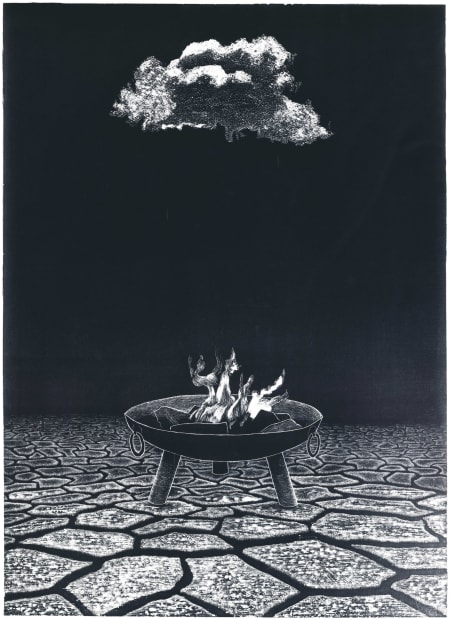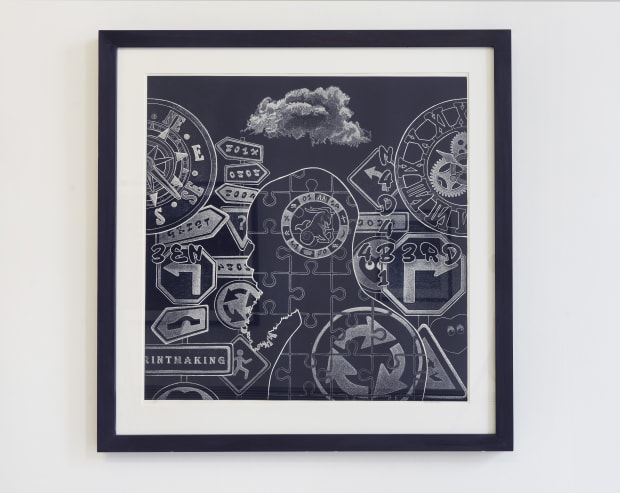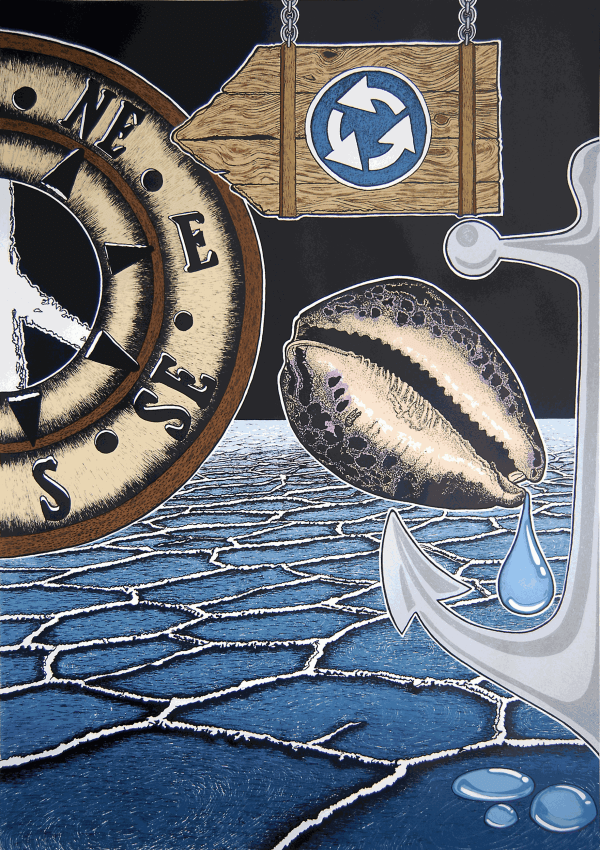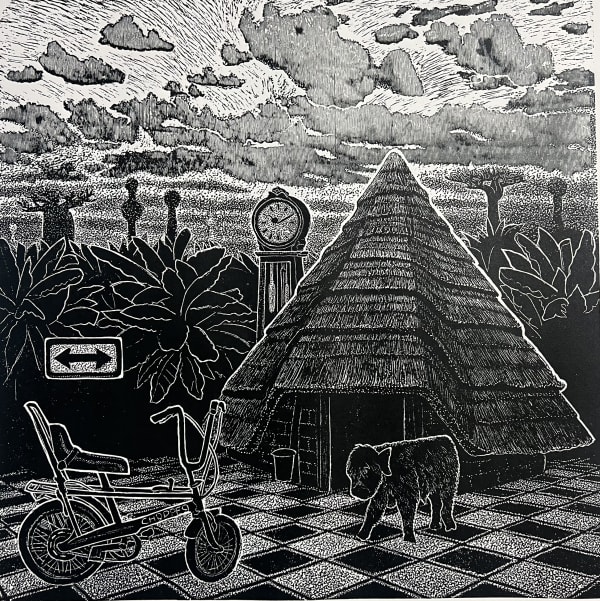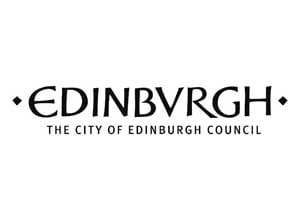-
 Ade Adesina, Interception, stone lithograph, 2024
Ade Adesina, Interception, stone lithograph, 2024 -

-
“I want to make work that makes people think. There might be an element that catches your eye and as you look deeper you are drawn into the artwork inviting you to spend time with it."
Adesina creative process begins with collecting imagery from his heritage, recent travels, and cultural influences. These include elements such as the baobab tree, road signs, clouds, architecture, and domestic objects. He then connects these visuals to underlying themes or questions. Each print is designed to tell multiple stories or pose various questions, always keeping the ideas open-ended, but with a clear sense of direction. Unique to Adesina’s approach is his spontaneity: he doesn’t start with sketches or plans. Instead, he draws and cuts directly onto the final plate, embracing the unpredictability of the final outcome. Adesina's work often includes British road signage, which he sees as a form of visual communication similar to his prints. These signs describe direction and guidance, illustrating how his life in Aberdeen has influenced his practice. In his latest diptych screenprint, the anchor symbolises a dead end or being held down, yet also signifies stability—rocking but not drifting away. Repeated cloud imagery in this and other works reflects the unpredictability and anxiety surrounding issues like climate change, symbolising the ever-changing nature of these challenges. Along with the anchor, the compass metaphorically guides the course of his artistic journey. -

-
Revolver II and Revolver III
-
The screenprints in INTERSECTION bring together symbols and themes from Adesina's previous works, but also pave a way for the future.
This was Adesina's first time trying screenprinting, working hard to translate the intricacies of his linocut prints into a new process.
-
 Under the Gray Sky, linocut, 2024
Under the Gray Sky, linocut, 2024 -
Ade Adesina's residency and exhibition are supported by the British Council.

27 Jul - 10 Nov 2024
